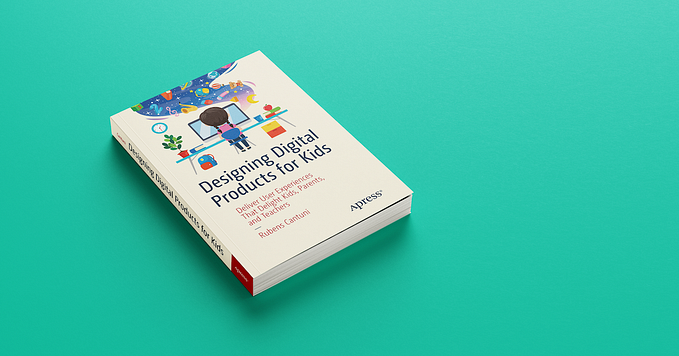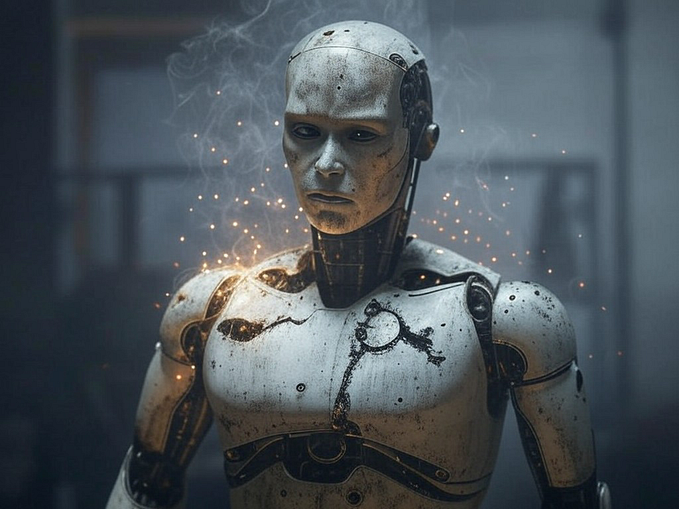Will AI steal UX/UI designers’ job?
Machine learning and standardization of UX/UI as the main culprits.

In a recent article, The New York Times takes a close look at the use of AI in journalism. Bloomberg News uses a bot to write articles on companies' earnings, it‘s able to read thousands of reports and write pieces about them.
The Post, the Los Angeles Times, the Guardian and many others are already using or testing bots to publish news about finance, traffic, weather, sports and more.
What about designers?
A few years ago a service called The Grid came out. The promise was a very easy way of getting a website designed by AI, it seems it didn’t really go great, a quick Google search will give you an idea.
But in the AI world things are going pretty fast and things might be changing soon.
1. Deep Learning
Deep learning is a part of machine learning discipline, the study and development of algorithms to enables machines to learn and improve themselves on a particular task.
Deep learning can make artificial intelligence analyze thousands of designs and come up with meaningful alternative designs on their own.
They can look at several iterations for, say a button, and come up with a new solution that actually makes sense.
The result is of course affected by the quality of the data it crunched. If we feed high-quality designs, award-winning ones, the chances of getting something good are of course higher.
2. Standardization of UX
Read posts, books, listen to conferences and podcasts about UX and you’ll have a sense of how fixed and standardized things came to be.
Best practices and “rules” are of course based on research, iterations, tests, trials and errors on countless projects, besides other fields of study such as psychology, to name one.
But this is also affecting the creative aspect of designing a product or an experience. The dare of experimenting is often lacking in favor of the safe solution.
3. Trends in UI
As all design disciplines, also User Interface Design is influenced by trends. The taste changes over time, things come and go and then come back again slightly different.
A quick look at dribbble will be enough to understand what I mean. I’m not saying it’s wrong. Design is not art, design ultimately needs to sell (a product, an experience, a service, information…) and in order to do that there’s an unavoidable target’s taste to please. An app sporting an outdated design will inevitably look older and less valuable than a trendy counterpart.
Don Norman in his UX bible “The design of everyday things” also highlights the importance of “beauty” in design.
1+2+3+ Big Data
If you take the three points above and combine them you start to get the picture.
Imagine a bot able to crunch thousands of award-winning designs, able to learn from them, considering all the UX implications and improve on them, and aligning everything to the latest trends.
Now take this add that this bot could also be able to analyze millions of data about users, what they like, what they look at, what they bought in the past, where they live, what language they speak and much much more.
The risks
We still miss that human touch that sparks innovation, but we would probably be not far from the work of the average designer. Not every designer is able to innovate, many of us often just look at things that work and follow along. And there’s nothing wrong with that. The problem is just that designers of this kind, in the next future, will be affected by AI designers much more than the ones capable of adding innovation into their work.
Companies could be tempted to rely on AI designers, for financial reasons and the possibility of virtually endless iterations (with no complaining). This would harm innovation deeply.
But we’re talking of a future where bots will be able to complete a design job from start to finish and this is probably still quite far from now.
The opportunities
A more realistic prediction would actually be the one where AI designer will work as smart assistants of human ones. They’ll be powerful tools designers will learn to master and use at their advantage.
Industrial revolution in 1800 thought us that low skills jobs (and workers) will be affected, so in order to take advantage of the incoming AI revolution, you need to set your skills to a high degree of sophistication, add value to your profile as a design consultant and innovator and delegate to bots all the boring tasks of your day-to-day.
Another not so futuristic opportunity resides in the customization of UI based on the user. In theory, we could be able to look at what the user likes, what struggles in the UX they face, what sort of color palette or typography or font size or call to actions they interact more often with and change the design accordingly, on a per-user base. The same app might be different from user to user.
In some way, this is happening already, for example on Netflix. Besides the obvious selection of titles based on your history, Netflix uses different thumbnails for different users, based on their data, like watch history, actors they like and so on. They have several designs for each title and if you watch a lot of movies with a particular actor the system picks the thumbnail featuring that same actor for the movies he/she stars in.
The one described above is just an example of how data can affect design decisions and offer an experience tailored to each and single user. The combination of this with AI designers taking care of iterating and perfecting UX/UI elements is the future of design tools. Rather than stealing our jobs, bots will most likely give us design superpowers. Just make sure to be ready for the revolution.
⬜️⬜️⬜️⬜️⬜️⬜️⬜ 👧🏻👧🏼🧒🏻👦🏼👧🏾👦🏿👧🏽👧🏻👧🏼🧒🏻👦🏼👧🏾👦🏿👧🏽👧🏻👧🏼 ⬜️⬜️⬜️⬜️⬜⬜️⬜
My new book “Designing Digital Products for Kids”! Out December the 4th!
Learn the secrets to design successful digital products for children.
You’ll find answers to all your questions regarding the industry, and its peculiarities in 📐 UX design, 🎨 UI design, 🔍 user testing, 📈 business strategies, and much more.
⬜️⬜️⬜️⬜️⬜️⬜️⬜ 👧🏻👧🏼🧒🏻👦🏼👧🏾👦🏿👧🏽👧🏻👧🏼🧒🏻👦🏼👧🏾👦🏿👧🏽👧🏻👧🏼 ⬜️⬜️⬜️⬜️⬜️⬜️⬜







